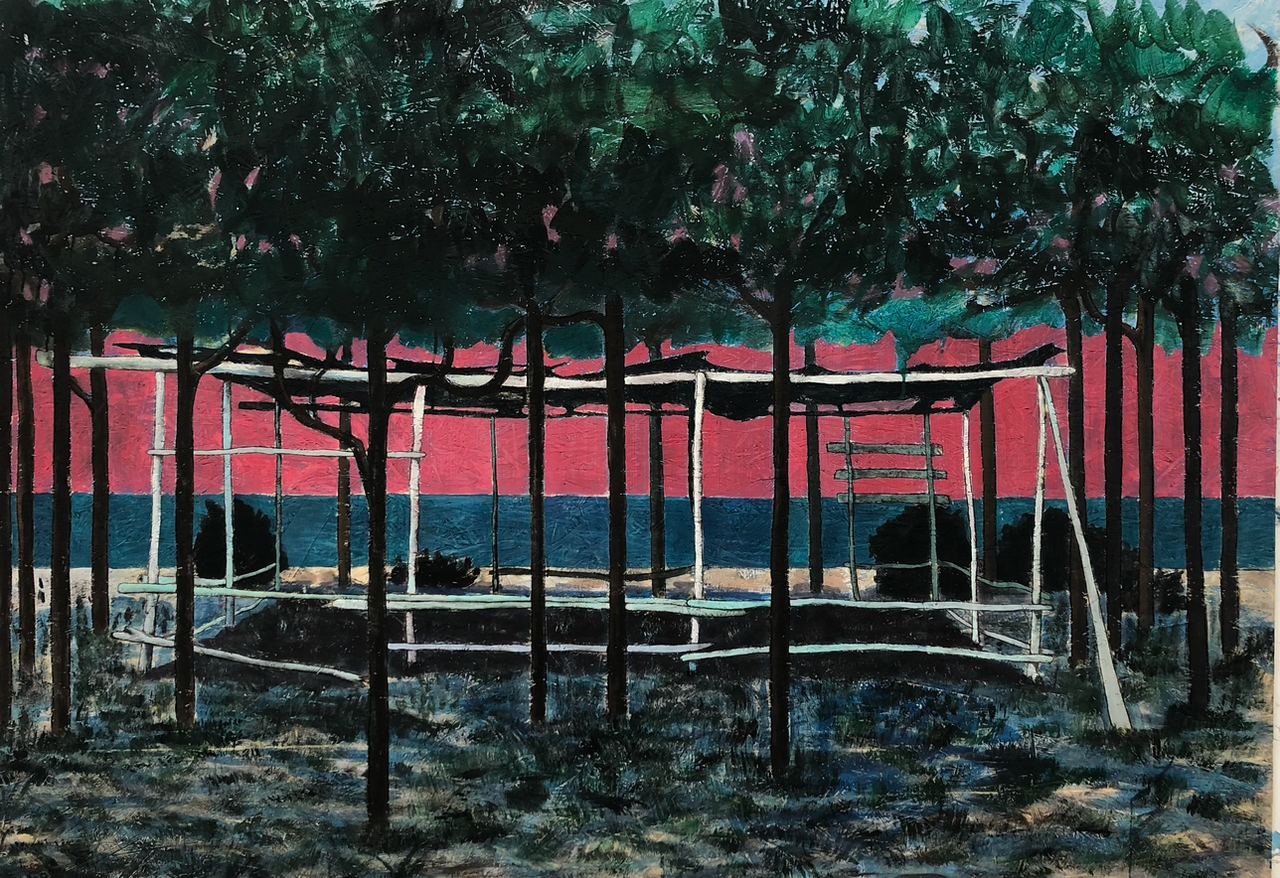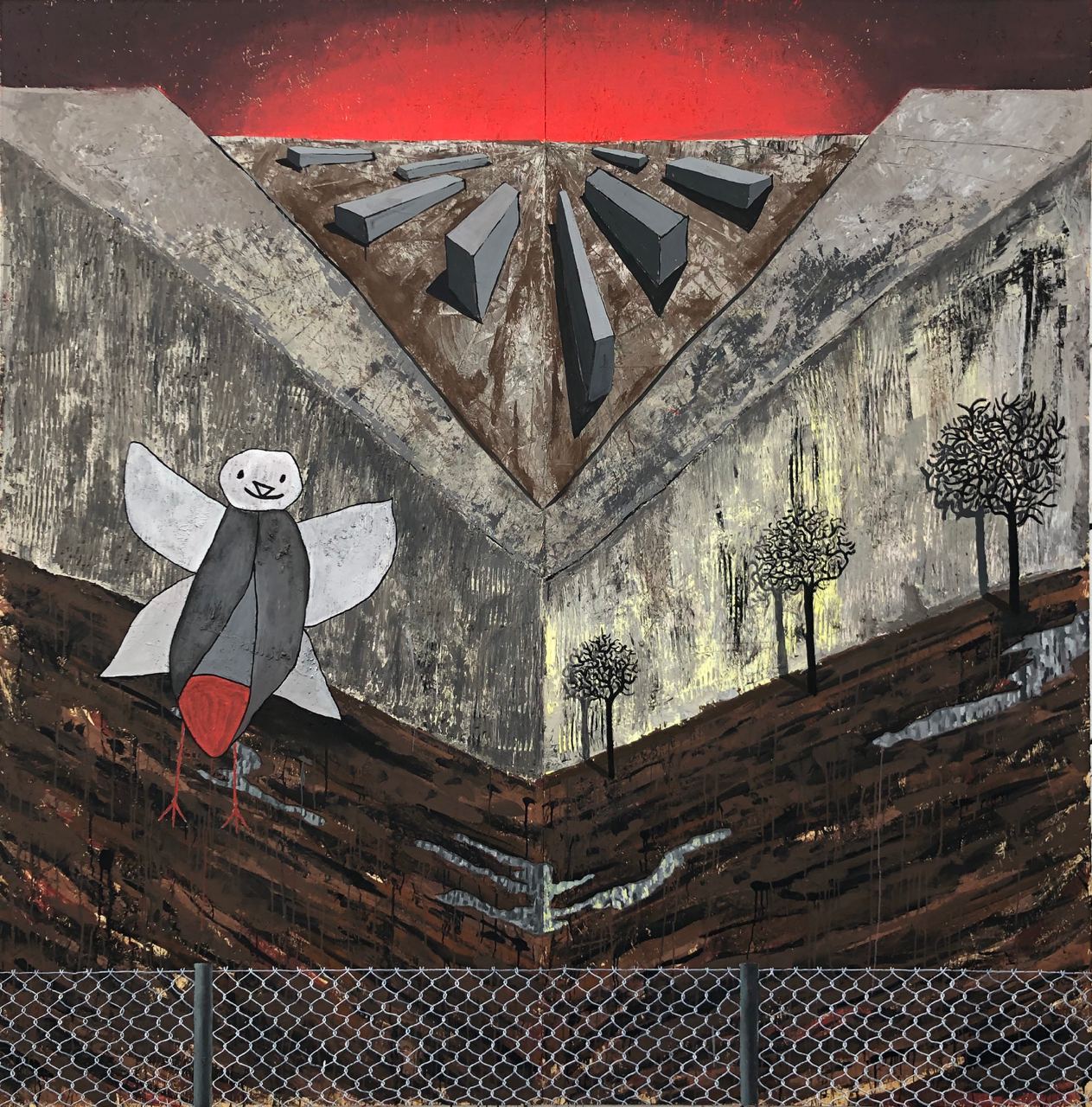Erlikh, Dmytro

Dmytro Erlikh was born in Odessa. He graduated from the M.B. Grekov Odessa Art School and the Faculty of Design at the International Humanitarian University. He has been active in the art scene since 2013 as a painter, graphic designer, installation artist, and sculptor, and has participated in numerous exhibitions and art projects.
"For the past two years, I've been working with landscapes – a genre that recreates the spaces we inhabit. Our entire lives revolve around the pursuit of balance between our internal and external worlds, between our inner selves and the landscapes surrounding us. In this series of works, internal processes of self-awareness become a kind of inner landscape, one that, as if emerging outward, does not impose on the space around it but coexists within and alongside it."
Free Will
Description provided by the artist:
"Willpower and freedom of will are often compared and contrasted as two separate concepts. Willpower refers to the ability to control one's impulses and make conscious decisions. It involves the capacity to resist temptations and stick to a chosen course, even when faced with obstacles or difficulties. On the other hand, freedom of will pertains to the ability to make decisions not determined by external factors. Although willpower and freedom of will are distinct concepts, they are often interconnected. To exercise one's freedom of will, a person must have the willpower to make decisions not dictated by external factors. Similarly, developing strong willpower often involves making conscious decisions aligned with one's values and priorities, which requires a certain level of freedom of will. Willpower and freedom of will play a significant role in shaping our lives and determining our choices."
The Sky is Red
Description provided by the artist:
"Ruins can symbolize decay, the end of an era, or catastrophe. They can also represent the opportunity for renewal through new construction or restoration. Ruins can be an allegory for the transience and vulnerability of human creations. A wild garden is associated with life, growth, resilience, and a vitality independent of humans. Red sunrise symbolizes the beginning of a new day and rebirth. This imagery can signify hope and possibilities. The color red is linked to emotions, passion, and energy, enhancing the symbolic significance of sunrise as a period of new life."
One Path
Description provided by the artist:
"A puddle at the crossroads can symbolize choice and decisions. The crossroads represent a branching point where a person must choose a direction. The puddle also reflects contemplation and inner deliberation about which decision to make. It can illustrate uncertainty and potential challenges on the path of decision-making."
Game Over
Description provided by the artist:
"The overgrown badminton field represents something that was once active and full of life but has lost its significance and become forgotten. It can symbolize the passage of time, loss of interest, or shifting priorities. The falling asteroid can symbolize a threat, unexpected changes, or a crisis. It can be a metaphor for something beyond human control. This imagery also represents the idea of the transience and fragility of human life."
The Butterfly
Description provided by the artist:
"Destroyed houses serve as a metaphor for catastrophe and decline. Combined with a child's drawing of a one-day butterfly, it can signify hope and the potential for renewal in the darkest moments of human history. The childlike innocence and tenderness represented by the butterfly can become a symbol of humanity's ability to find beauty and hope even in the most challenging circumstances."
The Box
Description provided by the artist:
"The image of an open box, mysteriously placed among the trees and containing unknown contents, possesses mystery and enigma. In this context, it can symbolize the unknown, the secretive, or potential possibilities. This imagery can evoke a sense of intrigue and create a desire to explore and learn more about what is inside the box."
After the Rain
Description provided by the artist:
"The rusty landscape" is a metaphor that can symbolize neglect, decay, and temporality in the context of nature or urban environment. This imagery can evoke feelings of melancholy and nostalgia, emphasizing the changeability of time and the flow of history. This imagery can also be used as an allegory for internal decline or psychological states, such as loss of hope or the depletion of inner vitality."







